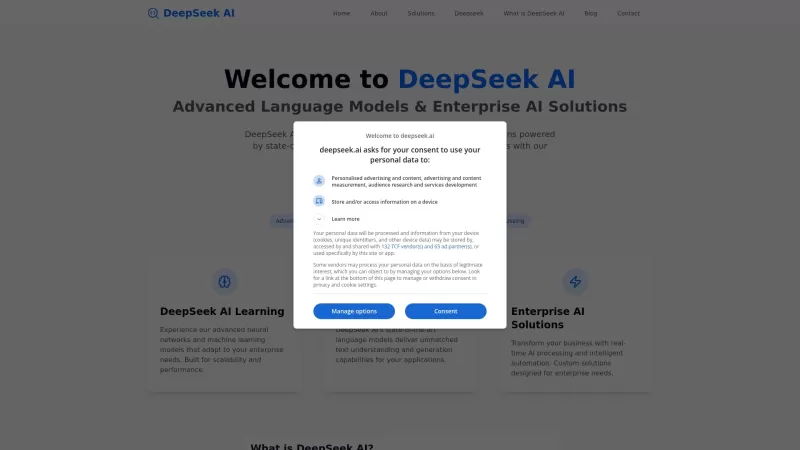Exploring Climate Change: Impacts and Solutions Unveiled

 April 26, 2025
April 26, 2025

 JasonSanchez
JasonSanchez

 0
0
Climate change is a pressing issue that touches every corner of our planet, from shifting weather patterns to the decline of biodiversity. Getting to grips with its causes, impacts, and solutions is essential for forging a sustainable path forward. This piece dives deep into the complexities of climate change, examining its wide-ranging effects and the efforts underway to tackle it. Let's explore how understanding these challenges can boost global climate awareness.
Key Points
Climate change is largely fueled by the buildup of greenhouse gases, especially from burning fossil fuels.
The effects of climate change are extensive, influencing everything from weather patterns and sea levels to the variety of life on Earth.
Combatting climate change involves shifting to renewable energy sources like wind and solar power.
Boosting energy efficiency and adopting sustainable practices in agriculture and forestry are vital steps.
International agreements and environmental activism are key in efforts to curb global temperature rises.
Carbon dioxide plays a major role in increasing greenhouse gas levels, worsening climate change.
Sustainable practices and renewable energy are crucial for effective climate action.
Climate change noticeably alters weather patterns, leading to more frequent extreme events.
The loss of biodiversity due to climate change has significant impacts on global ecosystems.
The Global Climate Change Challenge
What is Climate Change?
Climate change is a critical global issue, marked by long-term changes in temperature and weather patterns, mainly driven by human activities. The burning of fossil fuels releases vast amounts of greenhouse gases into the atmosphere, trapping heat and causing the planet to warm. The repercussions of this warming are widespread, affecting ecosystems, economies, and societies around the world.
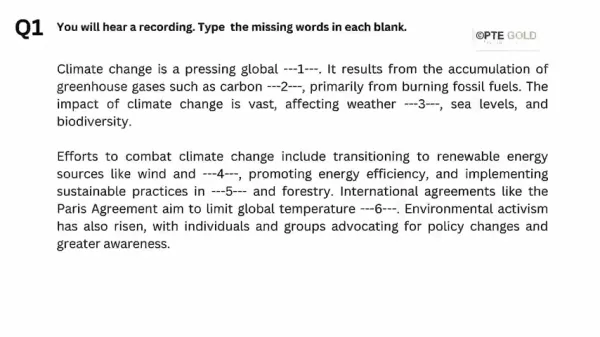
Key Drivers of Climate Change
- Greenhouse Gas Emissions: The primary driver of climate change is the accumulation of greenhouse gases like carbon dioxide, methane, and nitrous oxide, which trap heat and gradually warm the planet.
- Deforestation: Clearing forests for agriculture, urbanization, and other uses diminishes the planet's ability to absorb carbon dioxide, worsening climate change.
- Industrial Processes: Many industrial activities release greenhouse gases as byproducts, contributing to the rise in atmospheric concentrations.
The challenge of climate change is multifaceted, requiring global cooperation across borders and sectors to implement effective climate action.
Impacts of Climate Change on Our Planet
The effects of climate change are diverse and widespread, touching every part of the globe. From extreme weather events to rising sea levels, the impacts of a warming planet are already evident. Understanding these effects is crucial for developing strategies to mitigate and adapt to climate change.
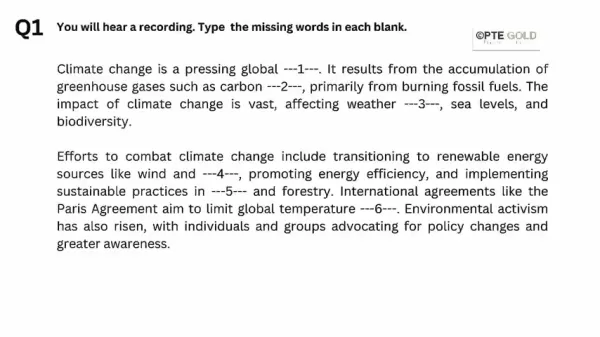
Weather Patterns Altered
Climate change significantly alters weather patterns worldwide, leading to:
- Increased Frequency and Intensity of Heatwaves: Many areas are experiencing more frequent and intense heatwaves, which pose risks to human health and ecosystems.
- More Severe Droughts: Climate change exacerbates droughts, leading to water scarcity, agricultural losses, and increased wildfire risks.
- Heavier Rainfall and Flooding: In some regions, climate change causes heavier rainfall, resulting in flooding, soil erosion, and damage to infrastructure.
- Stronger Tropical Cyclones: Some research indicates that climate change may intensify tropical cyclones, leading to more destructive storms.
Sea Levels Rising
One of the most visible signs of climate change is the rise in sea levels, driven by:
- Thermal Expansion: As the ocean warms, water expands, contributing to sea level rise.
- Melting of Glaciers and Ice Sheets: The melting of glaciers and ice sheets adds water to the ocean, further raising sea levels.
The consequences of rising sea levels include:
- Coastal Erosion: Rising sea levels increase coastal erosion, threatening coastal communities and ecosystems.
- Inundation of Low-Lying Areas: Many low-lying areas face the risk of being flooded by rising sea levels, displacing populations and damaging infrastructure.
- Saltwater Intrusion: Saltwater intrusion into freshwater sources is becoming a growing issue in coastal areas, affecting drinking water and agriculture.
Biodiversity Loss
Climate change profoundly impacts biodiversity, threatening many species and ecosystems through:
- Habitat Loss: Rising temperatures and changing weather patterns cause many species to lose their habitats, leading to population declines and increased extinction risks.
- Changes in Species Distribution: Climate change forces many species to shift their ranges in search of suitable conditions, disrupting ecosystems and altering species interactions.
- Increased Risk of Extinction: Many species struggle to adapt to the rapid pace of climate change, increasing their risk of extinction.
Examples of Impact
Impact Area Description Weather More frequent and intense extreme weather events, such as heatwaves, droughts, and floods. Sea Levels Rising sea levels causing coastal erosion, flooding of low-lying areas, and saltwater intrusion. Biodiversity Loss of habitats, shifts in species distribution, and increased extinction risks. Agriculture Decreased crop yields, increased water scarcity, and greater vulnerability to pests and diseases. Human Health Higher risks of heatstroke, respiratory illnesses, and vector-borne diseases. Infrastructure Damage from extreme weather events like floods, storms, and wildfires.
Combating Climate Change: Efforts and Solutions
Transitioning to Renewable Energy Sources
Shifting to renewable energy sources like wind and solar is a critical step in fighting climate change. These sources emit little to no greenhouse gases, offering a sustainable alternative to fossil fuels. Governments, businesses, and individuals all play a role in speeding up this transition.
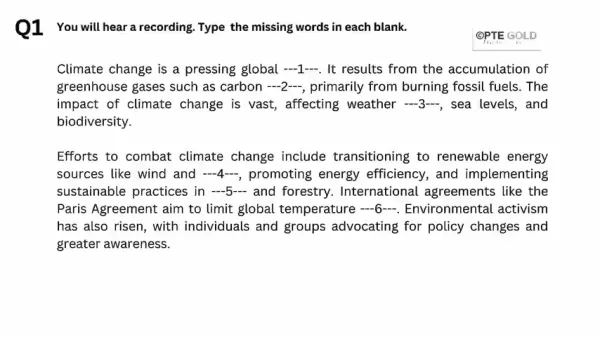
Wind Energy
Wind energy harnesses the power of the wind to generate electricity. Wind turbines convert the wind's kinetic energy into electrical energy. It's one of the fastest-growing renewable energy sources globally, with the potential to meet a significant portion of our electricity needs.
Solar Energy
Solar energy captures the sun's energy and converts it into electricity or heat. Solar photovoltaic (PV) panels convert sunlight directly into electricity, while solar thermal systems use sunlight to heat water or air. Solar energy is becoming more affordable and accessible, making it a practical option for homes, businesses, and communities.
Renewable Energy Sources
Energy Source Emission Levels Cost Effectiveness Wind Energy Little to none Increasing Solar Energy Little to none Increasing
Promoting Energy Efficiency
Improving energy efficiency is another essential strategy for combating climate change. By using less energy to achieve the same results, we can reduce greenhouse gas emissions and save money. Energy efficiency measures can be applied in homes, businesses, and industries.
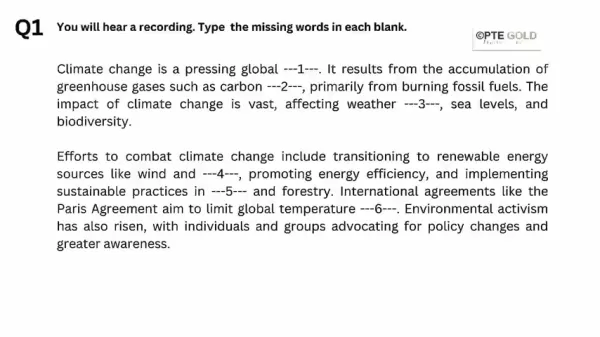
Energy Efficiency in Homes
- Insulation: Proper insulation reduces heat loss in winter and heat gain in summer, lowering energy use for heating and cooling.
- Energy-Efficient Appliances: Using energy-efficient appliances like refrigerators, washing machines, and dishwashers can significantly cut energy consumption.
- LED Lighting: Switching to LED lighting can reduce energy use for lighting by up to 80%.
- Smart Thermostats: Smart thermostats can automatically adjust temperature settings based on occupancy and weather, optimizing energy use.
Energy Efficiency in Businesses and Industries
- Energy Audits: Conducting energy audits can identify ways to improve energy efficiency in buildings and industrial processes.
- Efficient Equipment: Upgrading to more efficient equipment like motors, pumps, and compressors can reduce energy consumption.
- Waste Heat Recovery: Recovering waste heat from industrial processes can be used to generate electricity or heat water, reducing energy use.
- Building Automation Systems: These systems can monitor and control energy use in buildings, optimizing energy performance.
Implementing Sustainable Practices in Agriculture and Forestry
Sustainable practices in agriculture and forestry are crucial for mitigating climate change and protecting our natural resources. These practices can reduce greenhouse gas emissions, enhance carbon sequestration, and improve soil health.
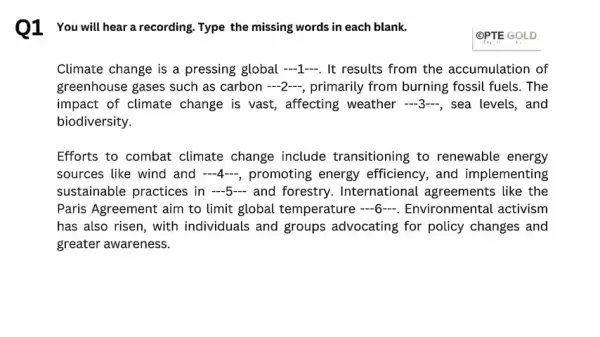
Sustainable Agriculture
- Conservation Tillage: Reducing or eliminating tillage can reduce soil erosion, improve soil health, and sequester carbon in the soil.
- Cover Cropping: Planting cover crops can improve soil health, reduce soil erosion, and sequester carbon in the soil.
- Crop Rotation: Rotating crops can improve soil health, reduce pest and disease issues, and increase crop yields.
- Integrated Pest Management: Using integrated pest management techniques can reduce pesticide use, protecting beneficial insects and improving environmental health.
Sustainable Forestry
- Reforestation: Planting trees can help sequester carbon from the atmosphere, restore degraded lands, and improve biodiversity.
- Sustainable Harvesting: Harvesting trees sustainably ensures forests continue to provide ecosystem services like carbon sequestration, water regulation, and wildlife habitat.
- Fire Management: Implementing fire management practices can reduce wildfire risks, protecting forests and reducing greenhouse gas emissions.
Individual Actions for Climate Change Mitigation
Reducing Your Carbon Footprint
Individuals can significantly impact climate change by reducing their carbon footprint. Simple changes in daily habits can lead to substantial reductions in greenhouse gas emissions.
Transportation
- Drive Less: Walk, bike, or use public transportation when possible. Consider carpooling or using ride-sharing services.
- Choose Fuel-Efficient Vehicles: When buying a vehicle, opt for a fuel-efficient model or consider an electric or hybrid car.
- Maintain Your Vehicle: Regular maintenance can improve fuel efficiency and reduce emissions.
Home Energy Use
- Conserve Energy: Turn off lights when leaving a room, unplug electronics when not in use, and use energy-efficient appliances.
- Improve Insulation: Add insulation to your home to reduce heat loss and gain.
- Use Renewable Energy: Consider installing solar panels or purchasing renewable energy from your utility company.
Consumption Habits
- Reduce, Reuse, Recycle: Reduce consumption, reuse items when possible, and recycle materials to conserve resources and reduce waste.
- Buy Local and Sustainable Products: Support local farmers and businesses that use sustainable practices.
- Eat Less Meat: Reducing meat consumption can significantly lower your carbon footprint, as meat production is a major source of greenhouse gas emissions.
Economic Incentives and Policies for Climate Action
Government Initiatives
Governments play a crucial role in incentivizing and implementing climate action through various policies and economic measures. These initiatives encourage businesses and individuals to reduce their carbon footprint and invest in sustainable practices.
Carbon Pricing
- Carbon Tax: A carbon tax places a fee on greenhouse gas emissions, incentivizing businesses and individuals to reduce their emissions.
- Cap-and-Trade Systems: Cap-and-trade systems set a limit on overall emissions and allow businesses to trade emission allowances, creating a market-based incentive to reduce emissions.
Subsidies and Incentives
- Renewable Energy Subsidies: Governments can provide subsidies and incentives to support the development and deployment of renewable energy technologies.
- Energy Efficiency Incentives: Incentives can be offered to businesses and individuals to invest in energy-efficient equipment and practices.
Regulations and Standards
- Emission Standards: Governments can set emission standards for vehicles, power plants, and other pollution sources.
- Building Codes: Building codes can be updated to require energy-efficient construction practices.
- Appliance Standards: Standards can be set for the energy efficiency of appliances.
Renewable Energy: Balancing Benefits and Challenges
Pros
- Reduced greenhouse gas emissions
- Diversification of energy sources
- Job creation in the renewable energy sector
- Improved air quality and public health
- Decreased reliance on fossil fuels
Cons
- Intermittency of some renewable energy sources (e.g., solar and wind)
- High upfront costs for some technologies
- Land use requirements for large-scale projects
- Potential impacts on wildlife and ecosystems
- Need for energy storage solutions
International Agreements
The Paris Agreement
International agreements like the Paris Agreement are essential for coordinating global efforts to combat climate change. These agreements provide a framework for countries to set emission reduction targets and work together to achieve them.

The Paris Agreement, adopted in 2015, aims to:
- Limit Global Warming: Keep the increase in global average temperature well below 2°C above pre-industrial levels and pursue efforts to limit the increase to 1.5°C.
- Set Emission Reduction Targets: Each country sets its own emission reduction targets, known as Nationally Determined Contributions (NDCs).
- Provide Financial Support: Developed countries provide financial support to developing countries to help them reduce emissions and adapt to climate change impacts.
- Enhance Transparency: Countries regularly report on their progress towards meeting their emission reduction targets.
Why International Agreements Matter
Area Goal Warming Limit global rise Reduction Reduce global emissions
Environmental Activism
Environmental Organizations
Environmental activism is also playing a vital role. With individuals and groups advocating for policy changes and greater awareness, environmental organizations and activists work to raise awareness, advocate for policy changes, and hold governments and businesses accountable.
Raising Awareness
Environmental organizations use various methods to raise awareness about climate change, including:
- Public Education Campaigns: These campaigns inform the public about the causes and impacts of climate change and promote actions individuals can take to reduce their carbon footprint.
- Protests and Demonstrations: These events draw attention to climate change and pressure governments and businesses to take action.
- Social Media Campaigns: These campaigns can reach a large audience and mobilize support for climate action.
Advocating for Policy Changes
Environmental organizations advocate for policy changes at local, national, and international levels. These policy changes include:
- Carbon Pricing: Advocating for carbon pricing mechanisms like carbon taxes and cap-and-trade systems.
- Renewable Energy Standards: Pushing for standards that require utilities to generate a certain percentage of their electricity from renewable sources.
- Energy Efficiency Standards: Supporting standards for buildings, appliances, and vehicles.
- Protection of Natural Resources: Advocating for the protection of forests, wetlands, and other natural resources.
Frequently Asked Questions
What are the main causes of climate change?
The primary cause of climate change is the accumulation of greenhouse gases in the atmosphere, mainly from burning fossil fuels. Deforestation and industrial processes also contribute to the problem.
What are the main impacts of climate change?
Climate change causes a wide range of impacts, including more frequent and intense extreme weather events, rising sea levels, and biodiversity loss.
What can individuals do to combat climate change?
Individuals can reduce their carbon footprint by driving less, conserving energy at home, reducing consumption, and supporting sustainable businesses and practices.
What are governments doing to combat climate change?
Governments are implementing various policies and economic measures to combat climate change, including carbon pricing, renewable energy subsidies, and emission standards.
What is the Paris Agreement?
The Paris Agreement is a landmark international agreement adopted in 2015. Its main goals are to limit global warming to well below 2°C above pre-industrial levels and pursue efforts to limit the increase to 1.5°C.
Related Questions
How can businesses contribute to climate change mitigation?
Businesses can contribute to climate change mitigation by reducing their greenhouse gas emissions, investing in renewable energy, improving energy efficiency, and adopting sustainable practices throughout their operations. They can also engage in carbon offsetting and support climate-friendly initiatives.
Reducing Greenhouse Gas Emissions
Businesses can reduce their greenhouse gas emissions by:
- Switching to Renewable Energy: Transitioning to renewable energy sources like solar, wind, and geothermal can significantly reduce a business's carbon footprint.
- Improving Energy Efficiency: Implementing energy-efficient technologies and practices can reduce energy consumption and greenhouse gas emissions.
- Reducing Waste: Reducing waste can conserve resources and reduce greenhouse gas emissions associated with manufacturing and disposal.
- Optimizing Transportation: Optimizing transportation logistics can reduce fuel consumption and greenhouse gas emissions.
Investing in Renewable Energy
Businesses can invest in renewable energy by:
- Installing Solar Panels: Installing solar panels on buildings can generate electricity and reduce reliance on fossil fuels.
- Purchasing Renewable Energy Certificates (RECs): Purchasing RECs can support the development of renewable energy projects.
- Investing in Renewable Energy Projects: Investing in renewable energy projects can provide a long-term source of clean energy.
Improving Energy Efficiency
Businesses can improve energy efficiency by:
- Conducting Energy Audits: Conducting energy audits can identify opportunities to improve energy efficiency.
- Upgrading Equipment: Upgrading to more efficient equipment like lighting, HVAC systems, and machinery can reduce energy consumption.
- Implementing Energy Management Systems: Implementing energy management systems can monitor and control energy use.
Adopting Sustainable Practices
Businesses can adopt sustainable practices by:
- Using Sustainable Materials: Using sustainable materials like recycled content and renewable resources can reduce environmental impact.
- Reducing Water Consumption: Reducing water consumption can conserve resources and reduce energy use associated with water treatment and distribution.
- Managing Waste Responsibly: Managing waste responsibly can reduce pollution and conserve resources.
- Promoting Sustainable Transportation: Promoting sustainable transportation options for employees and customers can reduce greenhouse gas emissions.
Related article
 Davos 2025: Navigating Trump's Return and Global Economic Shifts
Davos 2025 was a spectacle of snow-capped mountains, world leaders, and economic giants, but the real buzz was about the return of a familiar face: Donald Trump. His second inauguration as US President and his virtual address to the forum set the stage for a reevaluation of global trade, security, a
Davos 2025: Navigating Trump's Return and Global Economic Shifts
Davos 2025 was a spectacle of snow-capped mountains, world leaders, and economic giants, but the real buzz was about the return of a familiar face: Donald Trump. His second inauguration as US President and his virtual address to the forum set the stage for a reevaluation of global trade, security, a
 Super Mario Brothers: A Dark Fan Fiction Adventure
If you thought the Super Mario Brothers universe was all about bright colors and cheerful adventures, think again. Dive into this AI-assisted fan fiction that flips the script, plunging Mario and Luigi into a world teetering on the edge of despair, with unexpected alliances and an impending apocalyp
Super Mario Brothers: A Dark Fan Fiction Adventure
If you thought the Super Mario Brothers universe was all about bright colors and cheerful adventures, think again. Dive into this AI-assisted fan fiction that flips the script, plunging Mario and Luigi into a world teetering on the edge of despair, with unexpected alliances and an impending apocalyp
 AI-Powered Songwriting Unlocks Inner Bard, Raises Implications
The world of music is undergoing a fascinating transformation as artificial intelligence (AI) steps into the realm of songwriting. No longer just a sci-fi concept, AI songwriting is here, challenging our traditional views on creativity, authorship, and artistic expression. Let's explore how AI is cr
Comments (0)
0/200
AI-Powered Songwriting Unlocks Inner Bard, Raises Implications
The world of music is undergoing a fascinating transformation as artificial intelligence (AI) steps into the realm of songwriting. No longer just a sci-fi concept, AI songwriting is here, challenging our traditional views on creativity, authorship, and artistic expression. Let's explore how AI is cr
Comments (0)
0/200

 April 26, 2025
April 26, 2025

 JasonSanchez
JasonSanchez

 0
0
Climate change is a pressing issue that touches every corner of our planet, from shifting weather patterns to the decline of biodiversity. Getting to grips with its causes, impacts, and solutions is essential for forging a sustainable path forward. This piece dives deep into the complexities of climate change, examining its wide-ranging effects and the efforts underway to tackle it. Let's explore how understanding these challenges can boost global climate awareness.
Key Points
Climate change is largely fueled by the buildup of greenhouse gases, especially from burning fossil fuels.
The effects of climate change are extensive, influencing everything from weather patterns and sea levels to the variety of life on Earth.
Combatting climate change involves shifting to renewable energy sources like wind and solar power.
Boosting energy efficiency and adopting sustainable practices in agriculture and forestry are vital steps.
International agreements and environmental activism are key in efforts to curb global temperature rises.
Carbon dioxide plays a major role in increasing greenhouse gas levels, worsening climate change.
Sustainable practices and renewable energy are crucial for effective climate action.
Climate change noticeably alters weather patterns, leading to more frequent extreme events.
The loss of biodiversity due to climate change has significant impacts on global ecosystems.
The Global Climate Change Challenge
What is Climate Change?
Climate change is a critical global issue, marked by long-term changes in temperature and weather patterns, mainly driven by human activities. The burning of fossil fuels releases vast amounts of greenhouse gases into the atmosphere, trapping heat and causing the planet to warm. The repercussions of this warming are widespread, affecting ecosystems, economies, and societies around the world.

Key Drivers of Climate Change
- Greenhouse Gas Emissions: The primary driver of climate change is the accumulation of greenhouse gases like carbon dioxide, methane, and nitrous oxide, which trap heat and gradually warm the planet.
- Deforestation: Clearing forests for agriculture, urbanization, and other uses diminishes the planet's ability to absorb carbon dioxide, worsening climate change.
- Industrial Processes: Many industrial activities release greenhouse gases as byproducts, contributing to the rise in atmospheric concentrations.
The challenge of climate change is multifaceted, requiring global cooperation across borders and sectors to implement effective climate action.
Impacts of Climate Change on Our Planet
The effects of climate change are diverse and widespread, touching every part of the globe. From extreme weather events to rising sea levels, the impacts of a warming planet are already evident. Understanding these effects is crucial for developing strategies to mitigate and adapt to climate change.

Weather Patterns Altered
Climate change significantly alters weather patterns worldwide, leading to:
- Increased Frequency and Intensity of Heatwaves: Many areas are experiencing more frequent and intense heatwaves, which pose risks to human health and ecosystems.
- More Severe Droughts: Climate change exacerbates droughts, leading to water scarcity, agricultural losses, and increased wildfire risks.
- Heavier Rainfall and Flooding: In some regions, climate change causes heavier rainfall, resulting in flooding, soil erosion, and damage to infrastructure.
- Stronger Tropical Cyclones: Some research indicates that climate change may intensify tropical cyclones, leading to more destructive storms.
Sea Levels Rising
One of the most visible signs of climate change is the rise in sea levels, driven by:
- Thermal Expansion: As the ocean warms, water expands, contributing to sea level rise.
- Melting of Glaciers and Ice Sheets: The melting of glaciers and ice sheets adds water to the ocean, further raising sea levels.
The consequences of rising sea levels include:
- Coastal Erosion: Rising sea levels increase coastal erosion, threatening coastal communities and ecosystems.
- Inundation of Low-Lying Areas: Many low-lying areas face the risk of being flooded by rising sea levels, displacing populations and damaging infrastructure.
- Saltwater Intrusion: Saltwater intrusion into freshwater sources is becoming a growing issue in coastal areas, affecting drinking water and agriculture.
Biodiversity Loss
Climate change profoundly impacts biodiversity, threatening many species and ecosystems through:
- Habitat Loss: Rising temperatures and changing weather patterns cause many species to lose their habitats, leading to population declines and increased extinction risks.
- Changes in Species Distribution: Climate change forces many species to shift their ranges in search of suitable conditions, disrupting ecosystems and altering species interactions.
- Increased Risk of Extinction: Many species struggle to adapt to the rapid pace of climate change, increasing their risk of extinction.
Examples of Impact
| Impact Area | Description |
|---|---|
| Weather | More frequent and intense extreme weather events, such as heatwaves, droughts, and floods. |
| Sea Levels | Rising sea levels causing coastal erosion, flooding of low-lying areas, and saltwater intrusion. |
| Biodiversity | Loss of habitats, shifts in species distribution, and increased extinction risks. |
| Agriculture | Decreased crop yields, increased water scarcity, and greater vulnerability to pests and diseases. |
| Human Health | Higher risks of heatstroke, respiratory illnesses, and vector-borne diseases. |
| Infrastructure | Damage from extreme weather events like floods, storms, and wildfires. |
Combating Climate Change: Efforts and Solutions
Transitioning to Renewable Energy Sources
Shifting to renewable energy sources like wind and solar is a critical step in fighting climate change. These sources emit little to no greenhouse gases, offering a sustainable alternative to fossil fuels. Governments, businesses, and individuals all play a role in speeding up this transition.

Wind Energy
Wind energy harnesses the power of the wind to generate electricity. Wind turbines convert the wind's kinetic energy into electrical energy. It's one of the fastest-growing renewable energy sources globally, with the potential to meet a significant portion of our electricity needs.
Solar Energy
Solar energy captures the sun's energy and converts it into electricity or heat. Solar photovoltaic (PV) panels convert sunlight directly into electricity, while solar thermal systems use sunlight to heat water or air. Solar energy is becoming more affordable and accessible, making it a practical option for homes, businesses, and communities.
Renewable Energy Sources
| Energy Source | Emission Levels | Cost Effectiveness |
|---|---|---|
| Wind Energy | Little to none | Increasing |
| Solar Energy | Little to none | Increasing |
Promoting Energy Efficiency
Improving energy efficiency is another essential strategy for combating climate change. By using less energy to achieve the same results, we can reduce greenhouse gas emissions and save money. Energy efficiency measures can be applied in homes, businesses, and industries.

Energy Efficiency in Homes
- Insulation: Proper insulation reduces heat loss in winter and heat gain in summer, lowering energy use for heating and cooling.
- Energy-Efficient Appliances: Using energy-efficient appliances like refrigerators, washing machines, and dishwashers can significantly cut energy consumption.
- LED Lighting: Switching to LED lighting can reduce energy use for lighting by up to 80%.
- Smart Thermostats: Smart thermostats can automatically adjust temperature settings based on occupancy and weather, optimizing energy use.
Energy Efficiency in Businesses and Industries
- Energy Audits: Conducting energy audits can identify ways to improve energy efficiency in buildings and industrial processes.
- Efficient Equipment: Upgrading to more efficient equipment like motors, pumps, and compressors can reduce energy consumption.
- Waste Heat Recovery: Recovering waste heat from industrial processes can be used to generate electricity or heat water, reducing energy use.
- Building Automation Systems: These systems can monitor and control energy use in buildings, optimizing energy performance.
Implementing Sustainable Practices in Agriculture and Forestry
Sustainable practices in agriculture and forestry are crucial for mitigating climate change and protecting our natural resources. These practices can reduce greenhouse gas emissions, enhance carbon sequestration, and improve soil health.

Sustainable Agriculture
- Conservation Tillage: Reducing or eliminating tillage can reduce soil erosion, improve soil health, and sequester carbon in the soil.
- Cover Cropping: Planting cover crops can improve soil health, reduce soil erosion, and sequester carbon in the soil.
- Crop Rotation: Rotating crops can improve soil health, reduce pest and disease issues, and increase crop yields.
- Integrated Pest Management: Using integrated pest management techniques can reduce pesticide use, protecting beneficial insects and improving environmental health.
Sustainable Forestry
- Reforestation: Planting trees can help sequester carbon from the atmosphere, restore degraded lands, and improve biodiversity.
- Sustainable Harvesting: Harvesting trees sustainably ensures forests continue to provide ecosystem services like carbon sequestration, water regulation, and wildlife habitat.
- Fire Management: Implementing fire management practices can reduce wildfire risks, protecting forests and reducing greenhouse gas emissions.
Individual Actions for Climate Change Mitigation
Reducing Your Carbon Footprint
Individuals can significantly impact climate change by reducing their carbon footprint. Simple changes in daily habits can lead to substantial reductions in greenhouse gas emissions.
Transportation
- Drive Less: Walk, bike, or use public transportation when possible. Consider carpooling or using ride-sharing services.
- Choose Fuel-Efficient Vehicles: When buying a vehicle, opt for a fuel-efficient model or consider an electric or hybrid car.
- Maintain Your Vehicle: Regular maintenance can improve fuel efficiency and reduce emissions.
Home Energy Use
- Conserve Energy: Turn off lights when leaving a room, unplug electronics when not in use, and use energy-efficient appliances.
- Improve Insulation: Add insulation to your home to reduce heat loss and gain.
- Use Renewable Energy: Consider installing solar panels or purchasing renewable energy from your utility company.
Consumption Habits
- Reduce, Reuse, Recycle: Reduce consumption, reuse items when possible, and recycle materials to conserve resources and reduce waste.
- Buy Local and Sustainable Products: Support local farmers and businesses that use sustainable practices.
- Eat Less Meat: Reducing meat consumption can significantly lower your carbon footprint, as meat production is a major source of greenhouse gas emissions.
Economic Incentives and Policies for Climate Action
Government Initiatives
Governments play a crucial role in incentivizing and implementing climate action through various policies and economic measures. These initiatives encourage businesses and individuals to reduce their carbon footprint and invest in sustainable practices.
Carbon Pricing
- Carbon Tax: A carbon tax places a fee on greenhouse gas emissions, incentivizing businesses and individuals to reduce their emissions.
- Cap-and-Trade Systems: Cap-and-trade systems set a limit on overall emissions and allow businesses to trade emission allowances, creating a market-based incentive to reduce emissions.
Subsidies and Incentives
- Renewable Energy Subsidies: Governments can provide subsidies and incentives to support the development and deployment of renewable energy technologies.
- Energy Efficiency Incentives: Incentives can be offered to businesses and individuals to invest in energy-efficient equipment and practices.
Regulations and Standards
- Emission Standards: Governments can set emission standards for vehicles, power plants, and other pollution sources.
- Building Codes: Building codes can be updated to require energy-efficient construction practices.
- Appliance Standards: Standards can be set for the energy efficiency of appliances.
Renewable Energy: Balancing Benefits and Challenges
Pros
- Reduced greenhouse gas emissions
- Diversification of energy sources
- Job creation in the renewable energy sector
- Improved air quality and public health
- Decreased reliance on fossil fuels
Cons
- Intermittency of some renewable energy sources (e.g., solar and wind)
- High upfront costs for some technologies
- Land use requirements for large-scale projects
- Potential impacts on wildlife and ecosystems
- Need for energy storage solutions
International Agreements
The Paris Agreement
International agreements like the Paris Agreement are essential for coordinating global efforts to combat climate change. These agreements provide a framework for countries to set emission reduction targets and work together to achieve them.

The Paris Agreement, adopted in 2015, aims to:
- Limit Global Warming: Keep the increase in global average temperature well below 2°C above pre-industrial levels and pursue efforts to limit the increase to 1.5°C.
- Set Emission Reduction Targets: Each country sets its own emission reduction targets, known as Nationally Determined Contributions (NDCs).
- Provide Financial Support: Developed countries provide financial support to developing countries to help them reduce emissions and adapt to climate change impacts.
- Enhance Transparency: Countries regularly report on their progress towards meeting their emission reduction targets.
Why International Agreements Matter
| Area | Goal |
|---|---|
| Warming | Limit global rise |
| Reduction | Reduce global emissions |
Environmental Activism
Environmental Organizations
Environmental activism is also playing a vital role. With individuals and groups advocating for policy changes and greater awareness, environmental organizations and activists work to raise awareness, advocate for policy changes, and hold governments and businesses accountable.
Raising Awareness
Environmental organizations use various methods to raise awareness about climate change, including:
- Public Education Campaigns: These campaigns inform the public about the causes and impacts of climate change and promote actions individuals can take to reduce their carbon footprint.
- Protests and Demonstrations: These events draw attention to climate change and pressure governments and businesses to take action.
- Social Media Campaigns: These campaigns can reach a large audience and mobilize support for climate action.
Advocating for Policy Changes
Environmental organizations advocate for policy changes at local, national, and international levels. These policy changes include:
- Carbon Pricing: Advocating for carbon pricing mechanisms like carbon taxes and cap-and-trade systems.
- Renewable Energy Standards: Pushing for standards that require utilities to generate a certain percentage of their electricity from renewable sources.
- Energy Efficiency Standards: Supporting standards for buildings, appliances, and vehicles.
- Protection of Natural Resources: Advocating for the protection of forests, wetlands, and other natural resources.
Frequently Asked Questions
What are the main causes of climate change?
The primary cause of climate change is the accumulation of greenhouse gases in the atmosphere, mainly from burning fossil fuels. Deforestation and industrial processes also contribute to the problem.
What are the main impacts of climate change?
Climate change causes a wide range of impacts, including more frequent and intense extreme weather events, rising sea levels, and biodiversity loss.
What can individuals do to combat climate change?
Individuals can reduce their carbon footprint by driving less, conserving energy at home, reducing consumption, and supporting sustainable businesses and practices.
What are governments doing to combat climate change?
Governments are implementing various policies and economic measures to combat climate change, including carbon pricing, renewable energy subsidies, and emission standards.
What is the Paris Agreement?
The Paris Agreement is a landmark international agreement adopted in 2015. Its main goals are to limit global warming to well below 2°C above pre-industrial levels and pursue efforts to limit the increase to 1.5°C.
Related Questions
How can businesses contribute to climate change mitigation?
Businesses can contribute to climate change mitigation by reducing their greenhouse gas emissions, investing in renewable energy, improving energy efficiency, and adopting sustainable practices throughout their operations. They can also engage in carbon offsetting and support climate-friendly initiatives.
Reducing Greenhouse Gas Emissions
Businesses can reduce their greenhouse gas emissions by:
- Switching to Renewable Energy: Transitioning to renewable energy sources like solar, wind, and geothermal can significantly reduce a business's carbon footprint.
- Improving Energy Efficiency: Implementing energy-efficient technologies and practices can reduce energy consumption and greenhouse gas emissions.
- Reducing Waste: Reducing waste can conserve resources and reduce greenhouse gas emissions associated with manufacturing and disposal.
- Optimizing Transportation: Optimizing transportation logistics can reduce fuel consumption and greenhouse gas emissions.
Investing in Renewable Energy
Businesses can invest in renewable energy by:
- Installing Solar Panels: Installing solar panels on buildings can generate electricity and reduce reliance on fossil fuels.
- Purchasing Renewable Energy Certificates (RECs): Purchasing RECs can support the development of renewable energy projects.
- Investing in Renewable Energy Projects: Investing in renewable energy projects can provide a long-term source of clean energy.
Improving Energy Efficiency
Businesses can improve energy efficiency by:
- Conducting Energy Audits: Conducting energy audits can identify opportunities to improve energy efficiency.
- Upgrading Equipment: Upgrading to more efficient equipment like lighting, HVAC systems, and machinery can reduce energy consumption.
- Implementing Energy Management Systems: Implementing energy management systems can monitor and control energy use.
Adopting Sustainable Practices
Businesses can adopt sustainable practices by:
- Using Sustainable Materials: Using sustainable materials like recycled content and renewable resources can reduce environmental impact.
- Reducing Water Consumption: Reducing water consumption can conserve resources and reduce energy use associated with water treatment and distribution.
- Managing Waste Responsibly: Managing waste responsibly can reduce pollution and conserve resources.
- Promoting Sustainable Transportation: Promoting sustainable transportation options for employees and customers can reduce greenhouse gas emissions.
 Davos 2025: Navigating Trump's Return and Global Economic Shifts
Davos 2025 was a spectacle of snow-capped mountains, world leaders, and economic giants, but the real buzz was about the return of a familiar face: Donald Trump. His second inauguration as US President and his virtual address to the forum set the stage for a reevaluation of global trade, security, a
Davos 2025: Navigating Trump's Return and Global Economic Shifts
Davos 2025 was a spectacle of snow-capped mountains, world leaders, and economic giants, but the real buzz was about the return of a familiar face: Donald Trump. His second inauguration as US President and his virtual address to the forum set the stage for a reevaluation of global trade, security, a
 Super Mario Brothers: A Dark Fan Fiction Adventure
If you thought the Super Mario Brothers universe was all about bright colors and cheerful adventures, think again. Dive into this AI-assisted fan fiction that flips the script, plunging Mario and Luigi into a world teetering on the edge of despair, with unexpected alliances and an impending apocalyp
Super Mario Brothers: A Dark Fan Fiction Adventure
If you thought the Super Mario Brothers universe was all about bright colors and cheerful adventures, think again. Dive into this AI-assisted fan fiction that flips the script, plunging Mario and Luigi into a world teetering on the edge of despair, with unexpected alliances and an impending apocalyp
 AI-Powered Songwriting Unlocks Inner Bard, Raises Implications
The world of music is undergoing a fascinating transformation as artificial intelligence (AI) steps into the realm of songwriting. No longer just a sci-fi concept, AI songwriting is here, challenging our traditional views on creativity, authorship, and artistic expression. Let's explore how AI is cr
AI-Powered Songwriting Unlocks Inner Bard, Raises Implications
The world of music is undergoing a fascinating transformation as artificial intelligence (AI) steps into the realm of songwriting. No longer just a sci-fi concept, AI songwriting is here, challenging our traditional views on creativity, authorship, and artistic expression. Let's explore how AI is cr









